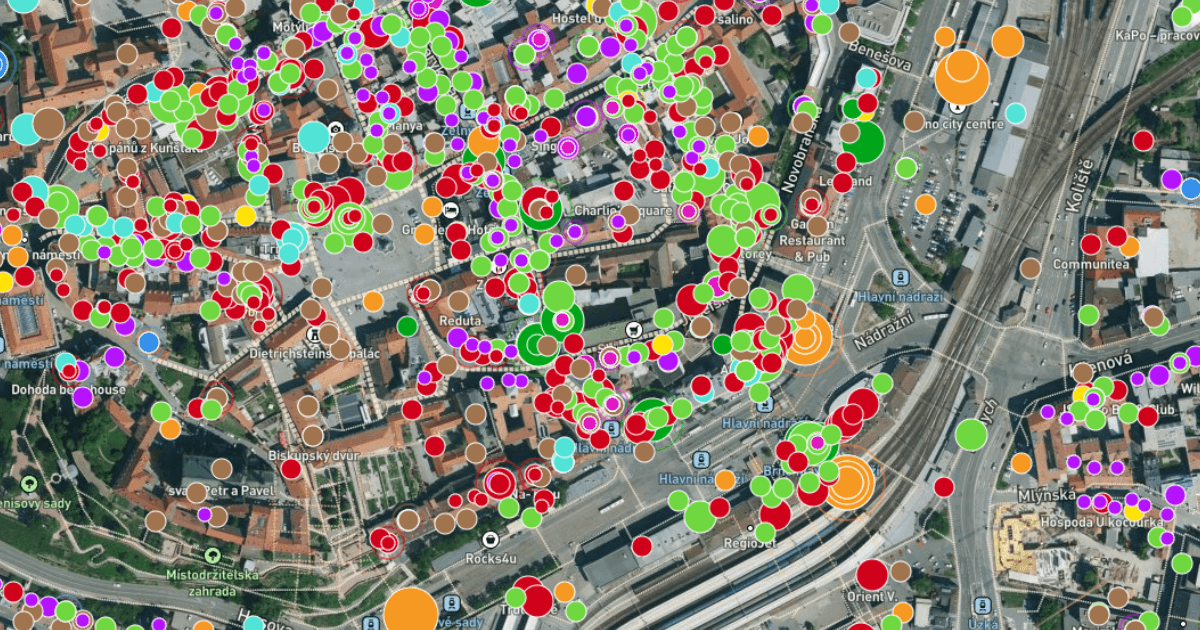
SPATIAL EXPERTISE
3 MINS READ
Choose the Right Location and Achieve Your Development Goals
Find the right location for your development goals with expert insights. Use Location Intelligence for strategic site selection and business success.
If you’re a strategic development director responsible for expanding your business, you’re probably looking for a new location right now. The number one question you need to ask is: “Where’s the best place to locate?” Finding the right answer is dependent on having the best tools at your disposal. But with so many different variables to consider, the task of making the smart decision that’s going to drive your business forward is far from easy.
Selecting the right location is a big deal for any developer
Finding a new location for your next branch or store can be daunting, to say the least. Not only might you not have sufficient access to external data. You may not know how to relay the data you do have to your team members or higher management in an understandable way. So much of this uncertainty is caused by the confusion of dealing with hard-to-interpret spreadsheets and charts. Thankfully, for business professionals tasked with making the tough calls, there is a decision-support solution that can help you make smarter growth-driven decisions.

Site Selection Solution
Choosing location analytics as your go-to resource eliminates the guesswork that results in poor decisions. The CleverMaps location intelligence solution brings your data to life by mapping your key metrics. Regardless of what locations you want to target, you can visualize all of your data from CRMs, customer loyalty programs, and externally sourced data such as demographics, the residential market, landmarks, zoning restrictions, etc. using mapping technology. So how does it work?
You input all of your internal and external data, including demographics (age, gender, income/education, level/ethnic background, etc.), KPIs, and POIs (hospitals, public transport stops, gyms, schools, restaurants), which are then filtered by intuitive location software.
Once that’s done, an intelligence map aggregates this data and shows it as an exposure heatmap. With your data visualized, you get a better insight into the area you are targeting. You can adjust the filters, extend the perimeter of your desired zone (i.e. from 10km to 30km), or zoom in to bring up more detail.
Now that we’ve seen how effective visualizing data can be, what exact types of data do you need to add to your location-planning matrix? CleverMaps have come up with 4 helpful tips that will help you get the most out of your location development plans.
Know your demographic
The type of customers you are looking to attract is a hugely important factor when developing your location strategy. Whether you’re relocating or expanding, you have to know your target demographic.
For instance, if you’re a high-end organic supermarket you’ll want to be as close as possible to a commercial or residential area with educated, upwardly mobile professionals. You can source information on age, gender, and income/education profiles from CRM databases, transaction histories, loyalty programs, and census reports.
Demographic data is just one type of dataset that can be visualized using location intelligence software. Placing as much detailed data as you can in a spatial context makes your decision-making much more specific.

Remember what you’re selling
You need to remember that what you sell is going to have a major influence on the choice of your next location. If you’re in the fast food business you want to target an area that’s densely populated to offer as much footfall as possible. If you sell luxury kitchens, you’ll want to focus on establishing your next outlet within, or close to, an affluent area. With the help of location mapping tools, product-related data can be easily plotted in context as data points, giving you more meaningful strategic insights.
Assess the competition
Your market analysis will invariably involve some type of competitor assessment. Knowing the locations of your nearest competitors will give you the edge. Either you set up your next store to maximize the potential advantage of winning over customers or look elsewhere to make inroads in a location that’s yet to be exploited. Your competition data can again be set as a filter when refining your exposure heatmap, helping you to consolidate your strategic goals.
View the bigger picture
A whole host of external factors can affect the selection of your next site. They can include proximity to services or supplies, access to infrastructure and transport links, the costs and availability of utilities, the overall attractiveness of a region, or environmental regulations. You can filter these outside influences as a data set to complement your customer-sourced information to view the bigger picture. All of which can be leveraged through the resources provided by location intelligence software. So give it a try and see the results for yourself!
Learn more about our Site Selection Solution.





